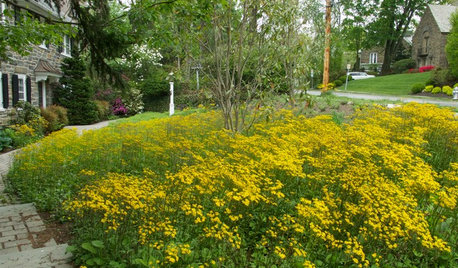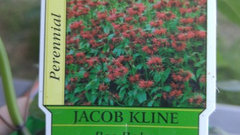how invasive is bee balm?
sarahrock
13 years ago
Featured Answer
Comments (36)
madjack2010
13 years agoallyseeds
13 years agoRelated Professionals
Londonderry Landscape Architects & Landscape Designers · Deer Park Landscape Architects & Landscape Designers · Elwood Landscape Architects & Landscape Designers · La Marque Landscape Architects & Landscape Designers · Burlington Landscape Contractors · Peabody Landscape Contractors · Wilmington Landscape Contractors · Bainbridge Island Landscape Contractors · Munster Landscape Contractors · Natick Landscape Contractors · Oklahoma City Landscape Contractors · Overland Park Landscape Contractors · Pahrump Landscape Contractors · Shoreview Landscape Contractors · Ferguson Landscape Contractorsterrene
13 years agopitimpinai
13 years agonjmomma
13 years agomaozamom NE Ohio
13 years agogrowlove
13 years agosue36
13 years agorusty_blackhaw
13 years agommqchdygg
13 years agonancykvb
13 years agov1rt
13 years agoarbo_retum
13 years agosue36
13 years agoechinaceamaniac
13 years agov1rt
13 years agolisa2004
13 years agonancyd
13 years agotorajima
13 years agotracey_nj6
13 years agoterrene
13 years agoBrett Golightly
5 years agogardengal48 (PNW Z8/9)
5 years agoBrett Golightly
5 years agosunnyborders
5 years agolast modified: 5 years agoBrett Golightly
5 years agoBrett Golightly
5 years agoBrett Golightly
5 years agoN A
5 years agogardengal48 (PNW Z8/9)
5 years agosunnyborders
5 years agolast modified: 5 years agoN A
5 years agosunnyborders
5 years agolast modified: 5 years agoN A
5 years agosunnyborders
5 years agolast modified: 5 years ago
Related Stories

GARDENING GUIDESDo You Have This Invasive Plant in Your Yard?
Garlic mustard is spreading across the U.S. Here’s how to spot it and what to do
Full Story
GARDENING FOR BUTTERFLIESGardening for the Bees, and Why It’s a Good Thing
When you discover how hard bees work for our food supply, you may never garden without them in mind again
Full Story
GARDENING GUIDESAttract Hummingbirds and Bees With These Beautiful Summer Flowers
Roll out a welcome mat for pollinators to keep your landscape in balance and thriving
Full Story
EARTH DAYHow to Design a Garden for Native Bees
Create a garden that not only looks beautiful but also nurtures native bees — and helps other wildlife in the process
Full Story
GARDENING GUIDESPlant Black Cherry Trees for the Birds and Bees
Plant Prunus serotina in the Central and Eastern U.S. for spring flowers, interesting bark and beautiful fall color
Full Story
GARDENING GUIDES6 Plants That Beat Butterfly Bush for the Wildlife Draw
It's invasive, a nonnative and a poor insect magnet. Check out these better alternatives to butterfly bush in the garden
Full Story
GARDENING GUIDESGreat Design Plant: Bugle Weed, a Quick Ground Cover
It’s highly adaptable, suppresses weeds, reduces erosion and provide weeks of bright flowers. Just watch for invasiveness
Full Story
GARDENING GUIDESPackera Aurea Puts On a Springtime Show in Sun or Shade
This vigorous native ground cover welcomes bees with its early-blooming flowers and makes an attractive lawn alternative
Full Story
GARDENING GUIDESPrunus Virginiana Thrives Under Deciduous Trees
Plant chokecherry for showy white flowers favored by native bees in spring, and to provide nesting habitat and food for birds
Full Story
FARM YOUR YARDHello, Honey: Beekeeping Anywhere for Fun, Food and Good Deeds
We need pollinators, and they increasingly need us too. Here, why and how to be a bee friend
Full StorySponsored
Industry Leading Interior Designers & Decorators in Franklin County
More Discussions








sunnyborders